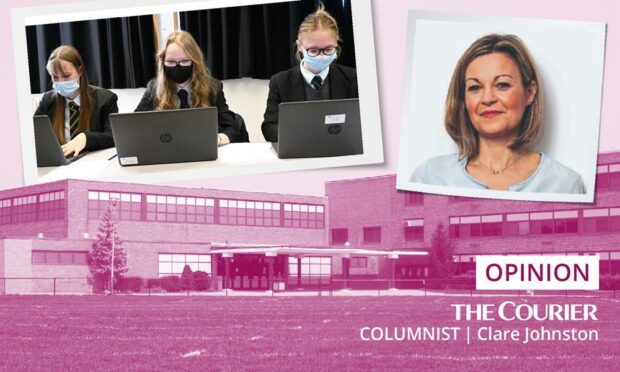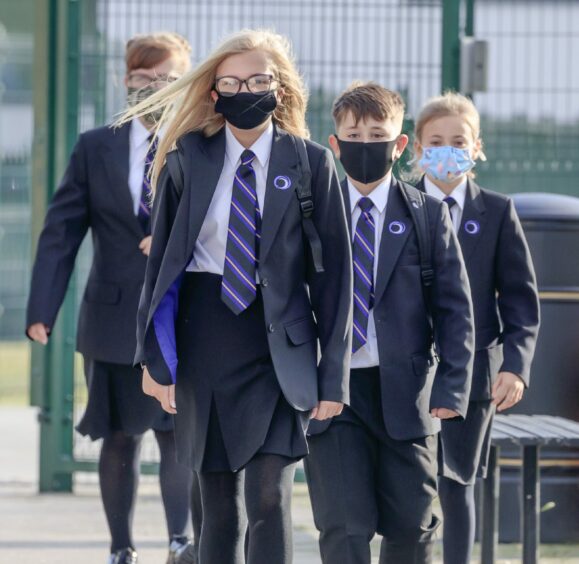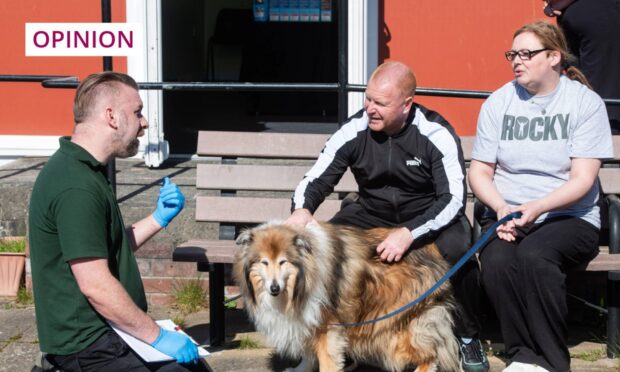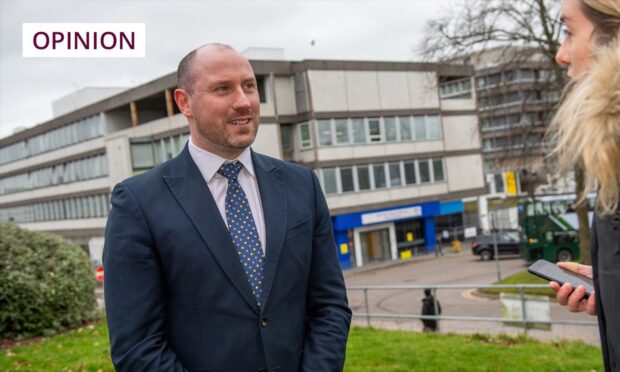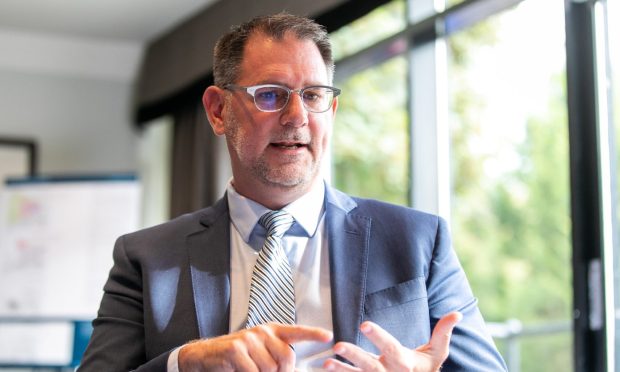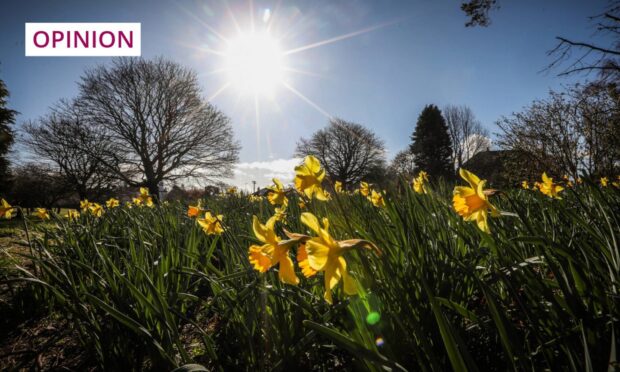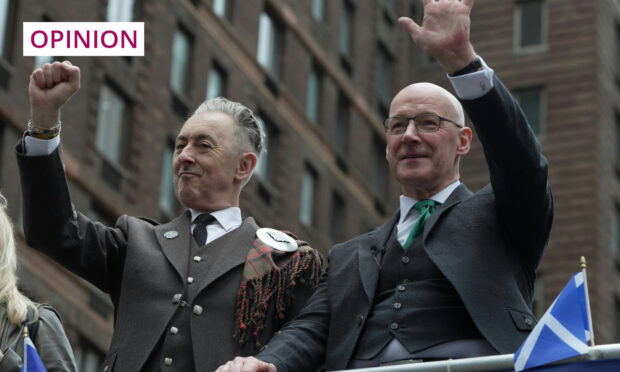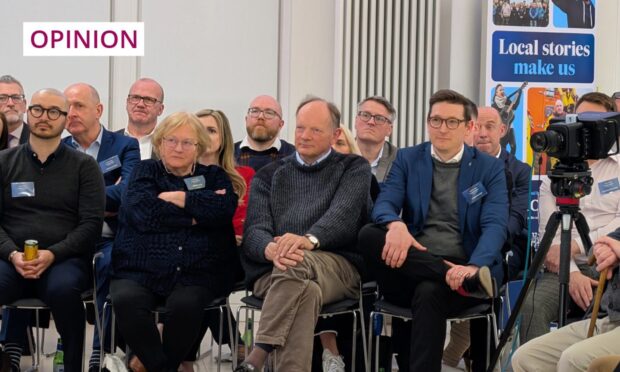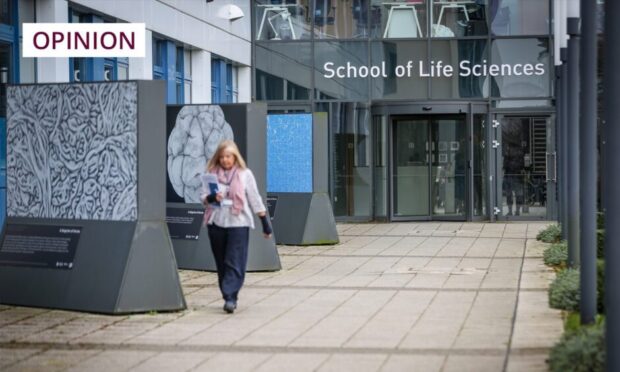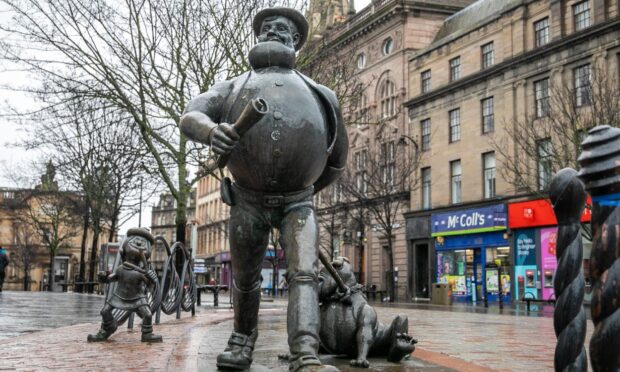I knew there was a problem when I turned to my son sitting next to me at the restaurant table and said, ‘It’s okay, you can take your mask off now,’ and he replied, ‘Nah, I’m fine’.
So accustomed had he grown to wearing a face covering around other people outside of the home, he now felt better with it on.
It’s not hard to see how that came to be when, for the better part of two years, older kids have been wearing masks all day every day in school unless they are eating or drinking.
When we stand back and think about what they have had to put up with in the name of protecting older generations it’s astonishing.
Sitting at home for months on end, cut off from their friends and trying to learn through handouts and shaky video calls — if they were fortunate enough to have access to technology.
Plays, after-school clubs, dances, recitals, concerts, memories and rights of passage cancelled.
Then, back in the classrooms, they’ve learned to live in a strange expressionless existence where you see only the eyes of your fellow pupils and teachers.
They breathe in stifled air all day and then have to deal with the maskne caused by the build-up of sweat and humidity — like they weren’t already self-conscious enough.
And they have got used to it. This is their norm.
Scottish pupils still waiting
In England masks have been in place on and off in schools, and have just this week been dropped again.
But Scottish secondary school pupils must wait yet longer.
There have been no easy decisions for politicians in the fight against Covid, and of course restrictions on all of us have been necessary along the way.
Nicola Sturgeon has urged parents and teenagers to continue to be patient as experts consider the risks and benefits of dropping the rules.
In her Covid update to Holyrood the First Minister said the role of masks in educational settings was under review, adding it would be irresponsible to drop the measure when cases were increasing in the under-15 age group.
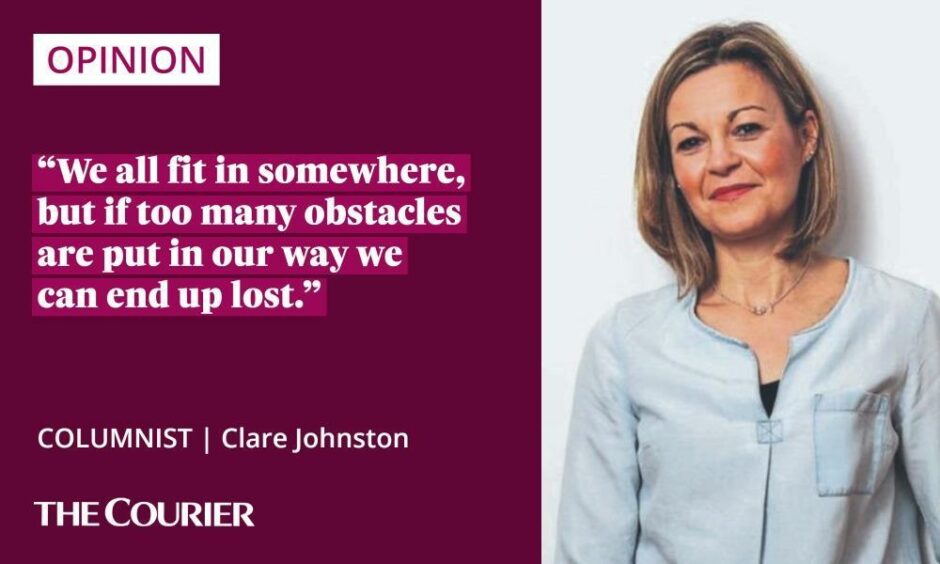
Our poll of readers back in October showed over 90% do not agree with school pupils continuing to have to wear face masks.
That was before Omicron, but the strength of feeling is clear.
Head teachers, parent groups and opposition parties have been adding their voices to calls for masks to go, while educational experts have warned they can impede learning and block emotional cues and signals between pupils and teachers.
‘Statistical uncertainty’ around the effectiveness of masks in schools
Covid is an airborne virus and we know masks in general reduce transmission, but the evidence on their effectiveness in schools is not exactly overwhelming.
A recent review published by the Department for Education in England highlighted data from a sample of 123 schools suggesting there was reduced Covid absences among schools using face coverings in the autumn term compared to those where masks were not worn.
Secondary schools where face coverings were used saw their Covid-linked absence rate fall from 5.3% on October 1 to 3.0% on the third week of October – a drop of 2.3%.
In secondary schools that did not use face masks, the average Covid absence rate fell from 5.3% to 3.6% – a fall of 1.7 percentage points. So the report concluded there was a “level of statistical uncertainty”.
Schools will always be hotbeds of viral infection and, of course, teachers and pupils who wish to continue to wear a mask should be free to do so.
But after two years of asking our kids to bear the brunt of the restrictions, the time has surely come to prioritise a return to normality and freedom for them.
Most adults by now have been vaccinated three times. There is no more we or they can do now but start to live again.
Too many obstacles
That school shows and dances are still being cancelled is heartbreaking. These formative moments have been lost, never to be regained for thousands of kids.
School trips feel like a thing of the past.
So many children find the actual learning side of school difficult and joyless, so the outings and the clubs and social occasions are often what makes it okay.
A child who struggles in the classroom can instead find their worth on stage in front of an audience or helping out with events.
We all fit in somewhere — but if too many obstacles are put in our way we can end up lost.
Coming out from behind the masks and a return to a full programme of events and activities for children should be the next port of call when it comes to the further easing of restrictions.
After all, it’s our children and young people who have paid the highest price of the pandemic — and it’s time we gave them their lives back.
